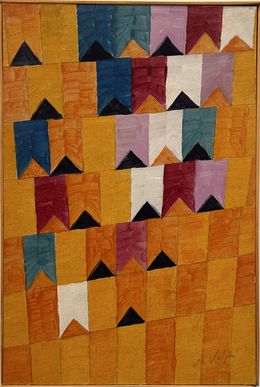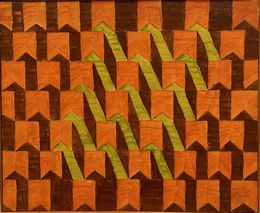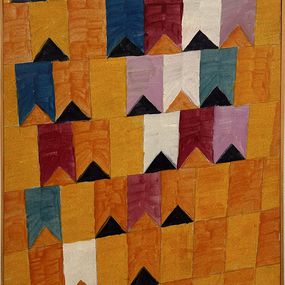
Presentation
Alfredo Volpi Claira Machado (born April 14, 1896 in Lucca – died May 28, 1988 in São Paulo) was a Brazilian painter of Italian origin considered one of the inspirations of the concretist movement, even if he always defended himself to belong to any current in painting.
It was from the 1950s that Volpi's art reached maturity (at the same time as he made his first and only trip to Italy, where he discovered Giotto). His favorite themes are drawn from Brazilian popular culture (house facades, small flags) but these are only pretexts for an increasingly refined art, tending little by little towards geometric abstraction (facades of the 1950s and 1960), magnified by a consummate art of color which made Volpi the greatest colorist of Brazilian painting [ref. necessary]. To Di Cavalcanti, who called him a "painter of flags", Volpi replied that his problem was not to paint flags, but to express the relationship between line, shapes and colors. Unclassifiable and self-taught artist, free from all influence, master of subtle and vibrant color, Volpi is today considered one of the three great representatives of Brazilian modernism, alongside Candido Portinari and Tarsila do Amaral.


Bandeirinhas e mastros
Alfredo Volpi
Painting - 22.5 x 29.5 x 2 cm Painting - 8.9 x 11.6 x 0.8 inch
$38,849


Bandeirinhas e mastros
Alfredo Volpi
Painting - 35 x 16 x 2 cm Painting - 13.8 x 6.3 x 0.8 inch
$38,849

Bandeirinhas e mastros
Alfredo Volpi
Painting - 22 x 35 x 2 cm Painting - 8.7 x 13.8 x 0.8 inch
$42,179
Discover our selections of works by artists
What are their 3 main works?
When was Alfredo Volpi born?
